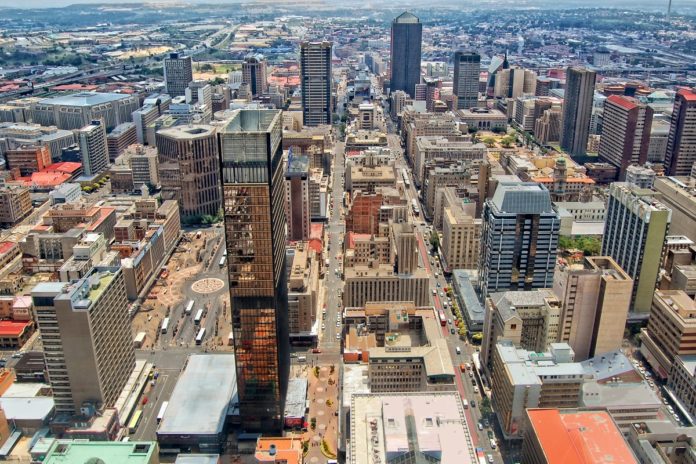Africa is rich in both human capital and natural resources. Through the different changes it has gone through over the years, the continent has evolved from an agrarian society to an industrial one. The increased awareness of the need to harness the remains of its unique resources that foreign invaders and colonial masters have exploited for decades is the driving force that has necessitated the growth and development many African countries are currently enjoying.
How The African Continent Has Evolved Over The Years
Over the years, African governments have taken advantage of the abundant natural and mineral resources to attract industries and investments to their countries, which have in turn created massive employment. Mining and other key industries were no doubt very essential to the growth, survival, and development of Africa’s emerging economy and GDP.
Other sectors that have grown the African economy and increased its GDP asides from mining include the production and exportation of raw materials to various parts of the world. Countries like Ghana and South Africa are among the highest exporters of gold and diamond and have witnessed an increase in investment from mining companies. Countries like Nigeria, Angola, and Egypt with crude oil and other cash crops have also attracted and created industries for local production of finished products from the raw materials. The presence of international industries has not only created employment but has also opened up local communities and transformed them into industrial towns.
Despite the global recession ravaging the world, research has shown that Africa’s GDP is among the fastest-growing in the world. This is a result of investment by foreign bodies in the African economy. Measures taken by local and international institutions to reduce and pay off debts have also contributed to increasing the economy of many developing African countries. Increased involvement in international trade and export of natural resources to developed countries allows the economy to become diversified, thereby reducing the dependence of the workforce on the government.
A Look At The Top 10 Richest Cities In Africa
There are 54 independent countries on the African continent, occupying an estimated 30 million km^2 in area of landmass. Famous for its diverse and unique cultures and ethnic groups, the people are mostly traders, artisans, craftsmen, and farmers. In the recent industrial dispensation, however, they have gotten involved in industrial and corporate work.
With their rich wealth in human and natural resources, African cities have significantly expanded and developed in terms of the economy and other developmental aspects. Below is a list of the top 10 richest cities in Africa. This list is, however, not always the same as several factors may influence events that could lead to change.
1. Johannesburg

- Country: South Africa
- GDP: $283 billion
- Wealth Value: 248 billion
- Population: 957,441 million
- Land Mass (Area km): 1,645km^2
- Economy: Industrial
This is the city capital of Gauteng province in South Africa. The city started out as a gold mining town in the early 19th century and has now become the biggest and most visited metropolitan city in South Africa.
The population of the city grew rapidly and by 1928, it became one of the largest cities in South Africa. Today, there are about 957,441 million people in the city, with an area mass of 1,645km^2. The city is an industrial and financial metropolis with an estimated wealth of 248 billion and a GDP of $16,370. Most of the city’s wealth is generated from Sandton, home to the Johannesburg Stock Exchange (the largest stock market in Africa). Most of Africa’s largest banks and corporations have their head offices in the area.
2. Cape Town

- Country: South Africa
- GDP: $329.53 billion
- Wealth Value: $123 billion
- Population: 4,618,000 Million
- Land Mass (Area km): 300km^2
- Economy: Industry and Innovation
Cape Town is the second-largest city and the legislative capital of South Africa. It had an early beginning in 1652 when the Dutch East Indian company settled and established a refreshment center by its seaport.
It has an area mass of 300km^2 and a population of 4,618,000 people. Cape Town is estimated to have a wealth of $123 billion and a GDP of $329.53 billion. Major money-generating sectors in the city include real estate and funds management.
3. Durban

- Country: South Africa
- GDP: $ 83.9 billion
- Wealth Value: $55 billion.
- Population: 3.720 million
- Land Mass (Area km): 2,292 km²
- Economy: Industrial and Real Estate
With a population of over 3.7 million people, Durban ranks as the third most populous city in South Africa after Cape Town and Johannesburg. The beautiful city was one of the host cities of the 2010 FIFA World Cup. According to Forbes, the total wealth in Durban is $55 billion. The city’s sources of income include financial services, real estate, manufacturing, etc
4. Pretoria

- Country: South Africa
- GDP: $75.6 billion
- Wealth Value: $42 billion
- Population: 2.56 million
- Land Mass (Area km): 687.5 km²
- Economy: Engineering, Food Processing, and Diamond Mining
Pretoria is one of the three cities that serve as South Africa’s seat of government. Founded in 1855 by Marthinus Pretorius, the city has not only grown to be one of the largest cities in South Africa, but also one of the most developed in Africa as a whole.
With a landmass of 687.5 km² and a population of 2.56 million, Pretoria is one of the most developed cities in the whole of the African continent. It has a total wealth of $42 billion and a GDP of $75.6 billion. Its most expensive suburbs are Lynnwood, Waterkloof, Waterkloof Ridge, Sterrewag, and Brooklyn. Economic activities in the area include engineering, food processing, and diamond mining.
5. Cairo

- Country: Egypt
- GDP: $129 billion
- Wealth Value: $118 billion
- Population: 9.54 million
- Land Mass (Area km): 3,085 km²
- Economy: Industrial, Commercial
Cairo is the first non-South African city to make the list. Known as the city by the Nile, Egypt’s capital city is the center of historic monuments, and one of the earliest cradles of civilization in the world. It has a population of 9.54 million people, occupying a landmass of 3,085km^2.
The city’s sources of income include financial services, telecoms, retail, tourism, and basic materials. The people are also into agriculture, arts and craft, textile production, and mining. Its total wealth is $118 billion with an estimated GDP of $129 billion.
6. Lagos
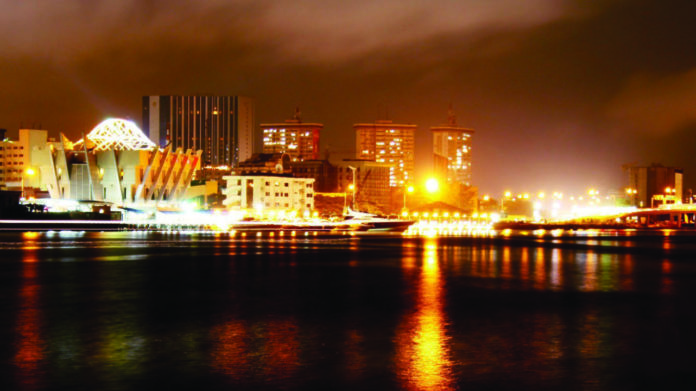
- Country: Nigeria
- GDP: $33,679 billion
- Wealth Value: $88 billion
- Population: 23.5 million
- Land Mass (Area km): 1,171 km²
- Economy: Trade, Exports, Imports, etc
Located in West Africa, Lagos is one of the most populous and largest cities in Nigeria. It is also the busiest business center in Africa with a population of 23.5 million. It is a port city with beaches and islands spread on an area mass of 1,171 km².
Lagos’ GDP is estimated at $33,679 billion, making it the highest revenue-generating city in Nigeria. Despite the fact that Lagos is only home to just 10% of Nigeria’s population, it contributes 30% to the nation’s GDP.
Economic activities include trade, exports and imports, trade, agriculture, food processing, textile production, art and crafts, mining, hospitality, and tourism. It is safe to say Lagos is the industrial hub of Nigeria.
7. Nairobi
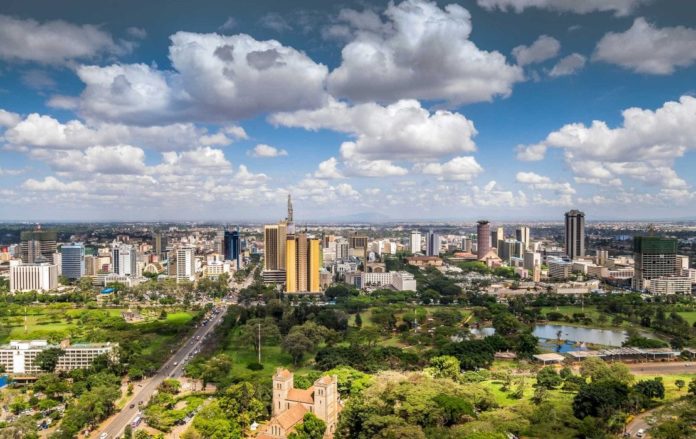
- Country: Kenya
- GDP: $14.8 billion
- Wealth Value: $47 billion
- Population:4.397 million
- Land Mass (Area km): 696 km²
- Economy: Trade, Exports, Tourism
Nairobi is the capital city of Kenya. It is the richest and most visited East African country, famous for keeping near-extinct African animal species, like the rhino, elephant, giraffes, and so on.
It was founded in 1899 and was a colonial railway settlement. The citizens are mostly into the production of coffee, tea, and sisal in commercial quantity. In addition to the mining of gold, limestone, soda ash, fluorspar and more, it has a population of 4.397 million people with an area mass of 676km^2. Nairobi’s GDP is estimated at $14.8 billion.
8. Luanda
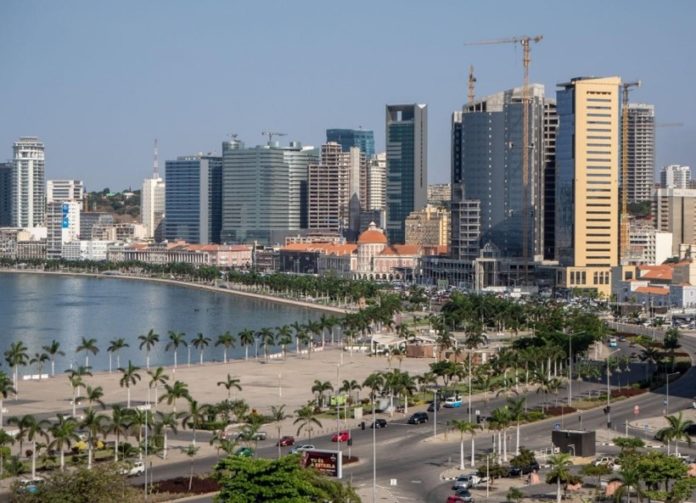
- Country: Angola
- GDP: $42 billion
- Wealth Value: –
- Population: 2.572 million
- Land Mass (Area km): 696 km²
- Economy: Tourism, Transportation, and Mining
This city was founded in 1576 as a fortress of Sao Miguel. Located along Luanda Bay, it served as a centre of the Portuguese colony. It is also the capital city of Angola, with a population of 2.572 million people occupying a landmass of 113km^2. Economic activities in Luanda are centered around the seaport, tourism, transportation, and mining. Its GDP is estimated at $42 billion
9. Casablanca
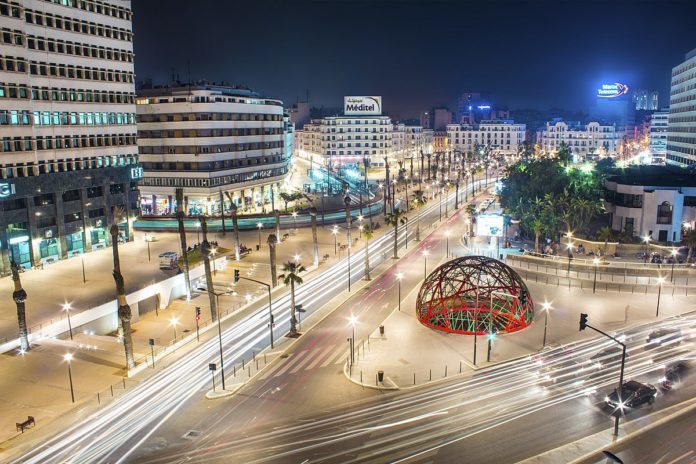
- Country: Morocco
- GDP: $39 billion
- Wealth Value: $42 billion
- Population: 3.7 million
- Land Mass (Area km): 384 km²
- Economy: Tourism, Agriculture, Food Processing, Fishing
The city of Casablanca is the economic center ushering people into Morocco. It was founded in 1907 and was a French explorers settlement, situated by the seaport. Casablanca has a population of 3.7 million people within an area mass of 384km^2. It is famous for its beautiful landscape, and unique French architectural designs. The people are involved in agriculture, food processing, fishing, textile, leather works, cigarette production, building materials, and tourism. Its estimated GDP is at $39 billion. The wealth of the city is valued at $42 billion and is majorly generated in the suburbs of Anfa and Ain Diab.
10. Accra
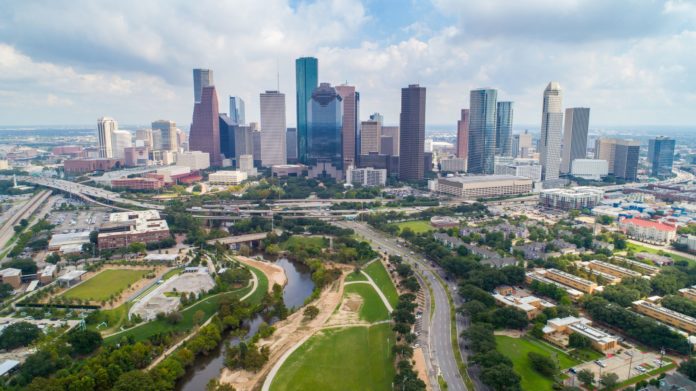
- Country: Ghana
- GDP: $3 billion
- Wealth Value: $32 billion
- Population: 4.2 million
- Land Mass (Area km): 225.7 km²
- Economy: Tourism, Transportation, and Mining
The history of Accra dates back to the 15th century. The city is located on the Atlantic coast of West Africa and was one of the earliest African cities to have contact with British, Dutch, and Portuguese explorers who built it up as a trade center.
Accra is the largest city and capital of Ghana. The natives are the largest producers and exporters of gold. Its population is about 4.2 million, occupying a land space of 225.67km^2. Accra’s GDP is estimated at $3 billion. The major economic activities are agriculture, trading, arts and craft, textile production, food processing, mining and tourism.
A Quick Mention Of Some Of The Poorest Cities In Africa
Despite Africa’s huge wealth, in both human and natural resources, there are more than a few cities within the African continent that are basking in a high level of under-development, living below the poverty line due to many factors such as corruption, insecurity, political instability, and gross mismanagement of resources, among other things. This has become a hindrance to these cities utilizing their wealth of resources, to achieve more positive socio-economic development from the resources at their disposal. Below are a few of them.
1. Khartoum
- Country: Sudan
- GDP: N/A
- Population: 5.274 million
- Land Mass (Area km):168,966 km²
- Economy: Subsistence Agriculture, Industry
Despite being the capital city of Sudan with a population of 5,274,321, covering an area of 1,010 km², Khartoum is still ranked among the poorest cities in Africa with an unemployment rate of 16.5% and a GDP that shrunk by 8.4% in 2020. The estimated GDP per capita in the whole of Sudan for 2020 is around 775.04 U.S. dollars.
One of the factors working against its growth and development is of course the tons of conflicts that the city and country have faced in recent years.
2. N’Djamena
- Country: Chad
- GDP: N/A
- Population: 1.476 million
- Land Mass (Area km): 104 km²
- Economy: Agriculture, Industry
While N’Djamena had prided itself as one of the most expensive cities in the continent in terms of the number of expatriates to work in, it comes second on the list of poorest cities in Africa. The city is surrounded by certain unpleasant factors that are hindering its growth and development and has become a very costly place to live in as most locals can’t afford to live there.
3. Kinshasa
- Country: The Democratic Republic Of The Congo
- GDP: N/A
- Population: 17.07 million
- Land Mass (Area km):: 9,965 km²
- Economy: Agriculture, Industry
It’s unfortunate that Kinshasa is on this list even though the city has all it takes to become one of the richest on the continent. It remains a poor one with an average annual income that is only $785 US dollars. In fact, according to statistics, over 70 percent of people living here are said to be living in abject poverty, living below $1.25 a day.
4. Conakry
- Country: Guinea
- GDP: N/A
- Population: 1.66 million
- Land Mass (Area km): 450 km²
- Economy: Agriculture, Exportation
Conakry is the capital city of Guinea, and despite having a population that is not up to 3 million, it is still bedevilled by tons of challenges of which top on the list is abject poverty. The city has one of the weakest economies as the majority of its income is generated from exporting bananas, storing cargoes, as well as the exportation of alumina. The country’s GDP is put at $5.6 billion, so you can guess the capital city is relatively poor.
5. Niamey
- Country: Niger
- GDP: N/A
- Population: 1.027 million
- Land Mass (Area km): 239.3 km²
- Economy: Industry
Despite being the country’s capital and administrative hub, Niamey is currently the 8th poorest city in Africa. The population of the city is constantly on the increase, leading also to an increase in crime rates. Terrorist group Al Qaeda has set foot in the area. Security issues are obviously one of the major things halting the city’s growth and development and leaving more people impoverished.
Notwithstanding, it is heart-warming to know that predictions from world economic experts suggest that Africa’s GDP is expected to increase in leaps and bounds, and to be a more self-sustained economy by the year 2050. This can be achieved by sustaining effective distribution and utilization of resources, the fight against corruption, continuous increase of educated workforce, more friendly trade and business policies, consumption and patronage of locally made products, security, and a stable political atmosphere within the continent.
